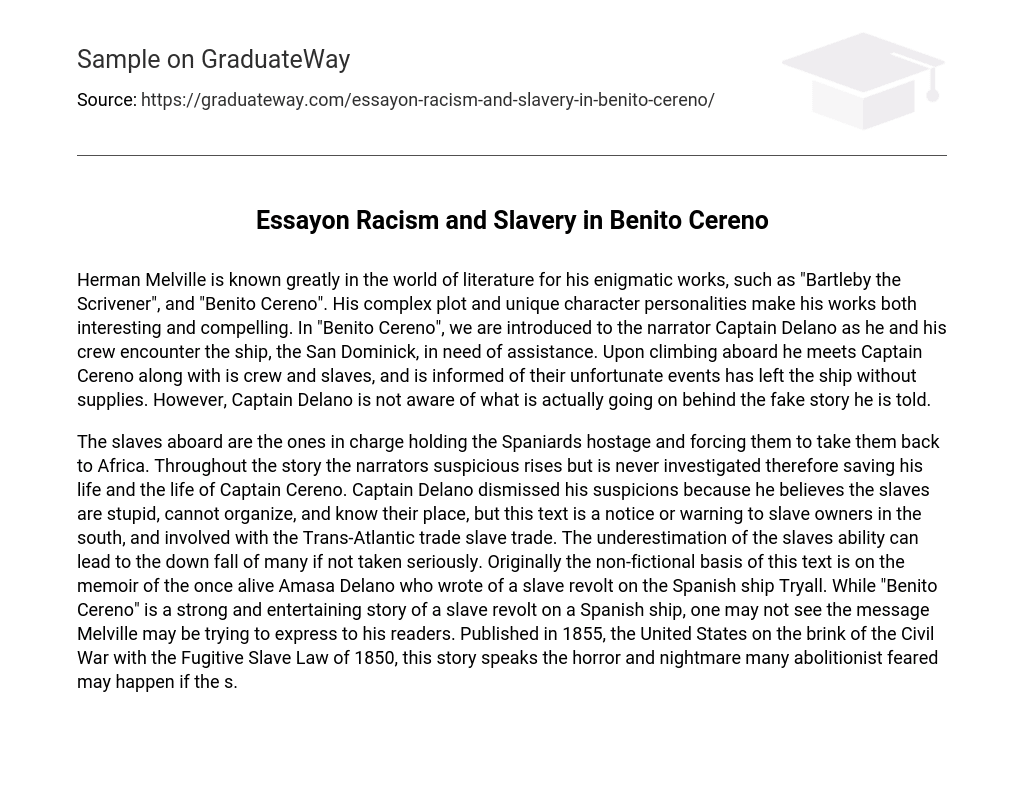Herman Melville is famous for his enigmatic literary works, such as “Bartleby the Scrivener” and “Benito Cereno”. His intricate narratives and unique characterizations make his writings both captivating and engrossing. In “Benito Cereno”, we encounter Captain Delano, the narrator, when he and his crew encounter the distressed San Dominick ship.
When Captain Delano boards the ship, he meets Captain Cereno along with his crew and slaves. He is informed that their misfortunes have resulted in a lack of supplies on the ship. However, little does Captain Delano realize that the story he hears conceals the actual events taking place.
The slaves on board the ship have taken control and are holding the Spaniards captive, compelling them to sail back to Africa. The narrator becomes increasingly suspicious, but his suspicions are never explored, ultimately saving his and Captain Cereno’s lives. Captain Delano dismisses these suspicions, considering the slaves to be unintelligent and incapable of organizing themselves, and understanding their submissive position. However, this text serves as a notice or warning to slave owners in the southern regions involved in the Trans-Atlantic slave trade.
The text emphasizes the importance of not underestimating the abilities of slaves, as doing so can have serious consequences. It stems from a non-fictional memoir by Amasa Delano about a slave revolt on the Spanish ship Tryall. “Benito Cereno” is an engaging narrative that depicts a slave revolt on a Spanish ship, but its underlying message may be overlooked by readers. Written in 1855, during a time when the United States was on the verge of the Civil War and had implemented the Fugitive Slave Law of 1850, this story reflects the horrors and nightmares experienced by many abolitionists.





